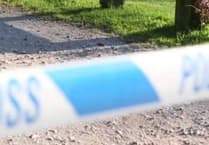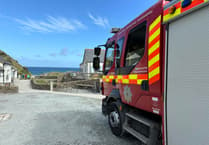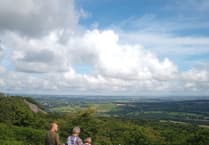WHILE writing about the battles of Waterloo and Quatre Bras, our thoughts are with the men, many of whom were recruited here in north Gloucestershire, particularly those in the Forest of Dean who served in the famous 28th of Foot. Perhaps references to contemporary church and chapel stones and memorials will assist the tracing of those killed.
It is recorded through the centuries that while Foresters were accorded customs and privileges, these men from early times left their iron mines, collieries and smallholdings for Agincourt, Waterloo or the Dardanelles in 1915.
During the 20th century, 'Pals' units such as the Herefordshire Rifle Volunteers left their homes at short notice and marched over the hills to Mitcheldean Road Station.
They were accompanied by their families and the village band, before leaving first for Salisbury Plain and then on to the Dardanelles.
The 13th Glosters also recruited ex-colliers from the Dean who fought and died in their hundreds during the First World War.
From early times the Foresters recruited into the old 28th, and later the Glosters were called the Slashers, a reference to their bravery after crossing the Bronx river 1775 during the American War of Independence – they climbed while slashing through the high grass to battle up to a steep and formidable defensive outpost to drive back 4,000 men commanded by George Washington.
Fifty years later on June 16 1815, their fortunes was again severely tested against Napoleon's army, this time along the roadside field verges to the east of Quatre Bras, south of Waterloo.
The old 28th, with their hat-badges front and back, were assigned to Sir James Kempt's brigade made up of 32nd, 79th and some companies of the 95th who were attired in green uniforms.
The old 28th infantrymen were specialist at forming squares (also known as hollows) and were undoubtedly Wellington's salvation against attacking cavalry and mass infantry charges.
Never in history was there a greater need of courageous infantry to hold the squares than at Quatre Bras and Waterloo.
The Napoleonic army in the summer of 1815 was made up of veteran infantrymen supported by their formidable artillery and their famous heavy horse, cuirassiers and lancers, all who bravely fought throughout Quatre Bras.
Marshall Ney led half against Wellington's tenuous positions at Quatre Bras.
Having split Wellington the thrust was to smash through Quatre Bras, where Wellington was late in securing this defensive position and, with the Prussian army retreating from Ligny, Marshall Ney threw his heavy horse cavalry to capitalise on initialy unprepared cross-road at Quatre Bras.
The 28th had waited for orders, to march with Sir Thomas Picton's division out of Brussels during the dawn of June 16 in full order for 18 miles southwards during which time the sun rose to make their journey more arduous with the weight of their ammunitions and provisions.
Perhaps we should again spare a thought for the poor old foot soldiers, because while artists and historian write or paint prodigiously of the cavalry charges, dragoons and portraits of aristocratic officers, yet if we could spend a few moments with Napoleon or his officers, we would learn what they feared most, was the infantry squares.
Such was their fame that even Wellington acknowledged, within his rather selective Waterloo dispatches, the Old 28th, the only English regiment he mentioned.
Finally the 28th repeated their heroic defence during Waterloo battle on June 18 and it is difficult to conceive the victorious outcome at Waterloo had it not been for the barnacle-like stand mounted by the squares at Quatre Bras.
– Andrew Gardiner, Ruardean.




Comments
This article has no comments yet. Be the first to leave a comment.